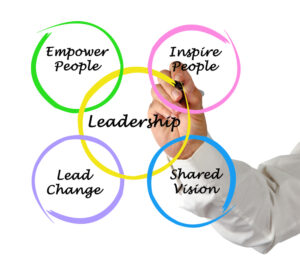 BY DAVID ROCK
BY DAVID ROCK
This summer I embarked on my first proper vacation in years. Despite full vaccinations and being diligently masked, within 24 hours of flying I somehow got COVID-19 and was out of action for weeks. My much-needed vacation became something else entirely.
Every week CEOs ask me about the relentlessness of this uncertainty, of how to make hybrid work environments more productive and take better care of their employees. I wish I had a better answer than the one I have been saying since March 2020: Stop hoping this will be over soon, and instead activate what’s known as the Stockdale Paradox. In short, accept that things are really difficult, and will likely stay this way for a long time, but that eventually, things will get better. And in the meantime, focus on making things better that are in your control.
This overarching mindset was just as relevant at the start of the pandemic, when we all went into psychological shock, as it was during the long, painful stage of lockdown, and just as relevant now as we start to move into a rehabilitation phase. Thinking like this is important for staying focused, present, and productive. We need to let go of trying to create a false sense of certainty.
But that doesn’t mean we can’t gain a little more clarity by considering macro trends, especially as we consider a new year. In the absence of certainty, clarity can be a soothing balm. Here are a few of my thoughts on four bigger trends to watch in 2022.
SUSTAINABLE STRATEGIES
The Great Resignation and state of discontent have accelerated the need for retention strategies. But being sustainable won’t cut it. Companies asking, “How can we retain our top talent and not burn people out?” are focused only on the survival of a depleted workforce. Think of organizational practices in one of four stages on a continuum: exploitative, depletive, sustainable, and regenerative.
Regenerative processes on a farm mean every year the land gets more bio-diverse and more productive, and a similar process can take place with people. Taking a regenerative approach, like firms such as Patagonia, requires answering questions like: “How do we actually make people better off by working with us? How can they get smarter, healthier, and wealthier, during their time here?” These kinds of questions are going to become more prevalent in 2022 as organizations realize they need to create environments that enrich their people’s lives if they want to keep talent—particularly since top talent is now extremely mobile.
MEASURABLE DEI INITIATIVES
Since the murder of George Floyd, organizations have been working so hard to implement proclamations of diversity, equity and inclusion that they forgot to set a baseline, making it difficult to measure efforts and potentially continue them. To measure change in complex systems requires you to think about change in three domains.
First, you must figure out the level of priority people give to an idea. This can be measured with software that identifies the use of specific terms in your internal communications, or by polling people on the importance of an issue. Next, you must build habits, which is the step most organizations overlook. The majority of change initiatives fail because of an inability to change day-to-day habits. Here, you can use a novel approach that tracks the uptake of new habits across large populations. Finally, you need to change systems, which can be measured qualitatively.
With this in mind, organizations can measure the impact of their internal interventions, tweaking and improving them as they go, to ensure real change happens. If we can’t report on real change, DE&I efforts may be in peril.
REAL DATA AROUND HYBRID PRACTICES
Many leaders I speak with ask when we’ll all return to the office. In my view, that’s a thing of the past because already there are plenty of upsides to hybrid work. Companies canrecruit more diversely, revamp antiquated onboarding practices, and provide autonomy to workers with flexible scheduling. But leaders need proof beyond anecdotes and in 2022 we’ll begin to see that data roll in.
As you begin to compile your own hybrid data, don’t forget to focus on results, the true indicator of performance, instead of effort, which often can feel worse at the beginning. Like starting a new exercise program, the beginning of something new that takes hard work can feel bad, while also being incredibly good for you. Hybrid work is like that; it feels bad even if it actually is really good for your organization. But getting hybrid right puts you in the best position to adapt fast to whatever comes your way down the road. Simply put, flexible work practices are the new disaster-preparedness strategy.
DETENTE IN THE ONGOING WAR FOR TALENT
The talent conundrum will continue to be one of the biggest narratives in business in the coming year as companies struggle to fill job openings, and employees continue to resign in droves. But if the past has taught us anything, it’s that there’s always a breaking point. Workers may realize where they can find their rewards, and organizations, in turn, may realize that people are all they have, and what they need to thrive, leading to a potential detente in the ongoing war for talent.



